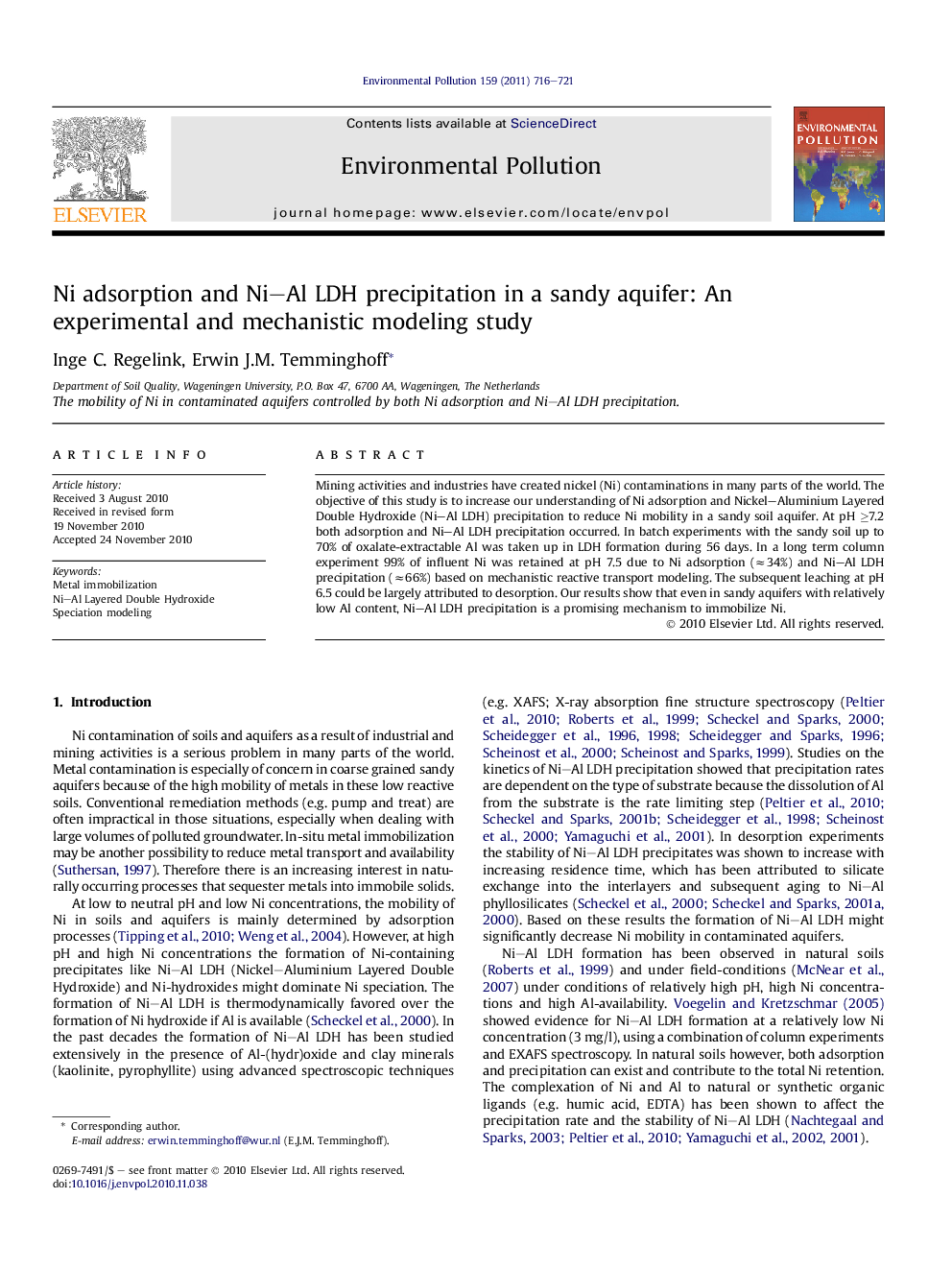| Article ID | Journal | Published Year | Pages | File Type |
|---|---|---|---|---|
| 4425372 | Environmental Pollution | 2011 | 6 Pages |
Mining activities and industries have created nickel (Ni) contaminations in many parts of the world. The objective of this study is to increase our understanding of Ni adsorption and Nickel–Aluminium Layered Double Hydroxide (Ni–Al LDH) precipitation to reduce Ni mobility in a sandy soil aquifer. At pH ≥7.2 both adsorption and Ni–Al LDH precipitation occurred. In batch experiments with the sandy soil up to 70% of oxalate-extractable Al was taken up in LDH formation during 56 days. In a long term column experiment 99% of influent Ni was retained at pH 7.5 due to Ni adsorption (≈34%) and Ni–Al LDH precipitation (≈66%) based on mechanistic reactive transport modeling. The subsequent leaching at pH 6.5 could be largely attributed to desorption. Our results show that even in sandy aquifers with relatively low Al content, Ni–Al LDH precipitation is a promising mechanism to immobilize Ni.
Research highlights► Ni solubility is controlled by adsorption and Ni–Al LDH precipitation. ► Solubility product of Ni–Al LDH. ► Reactive transport modeling including adsorption and precipitation. ► Ni is immobilized by formation of stable Ni–Al LDH precipitates.
